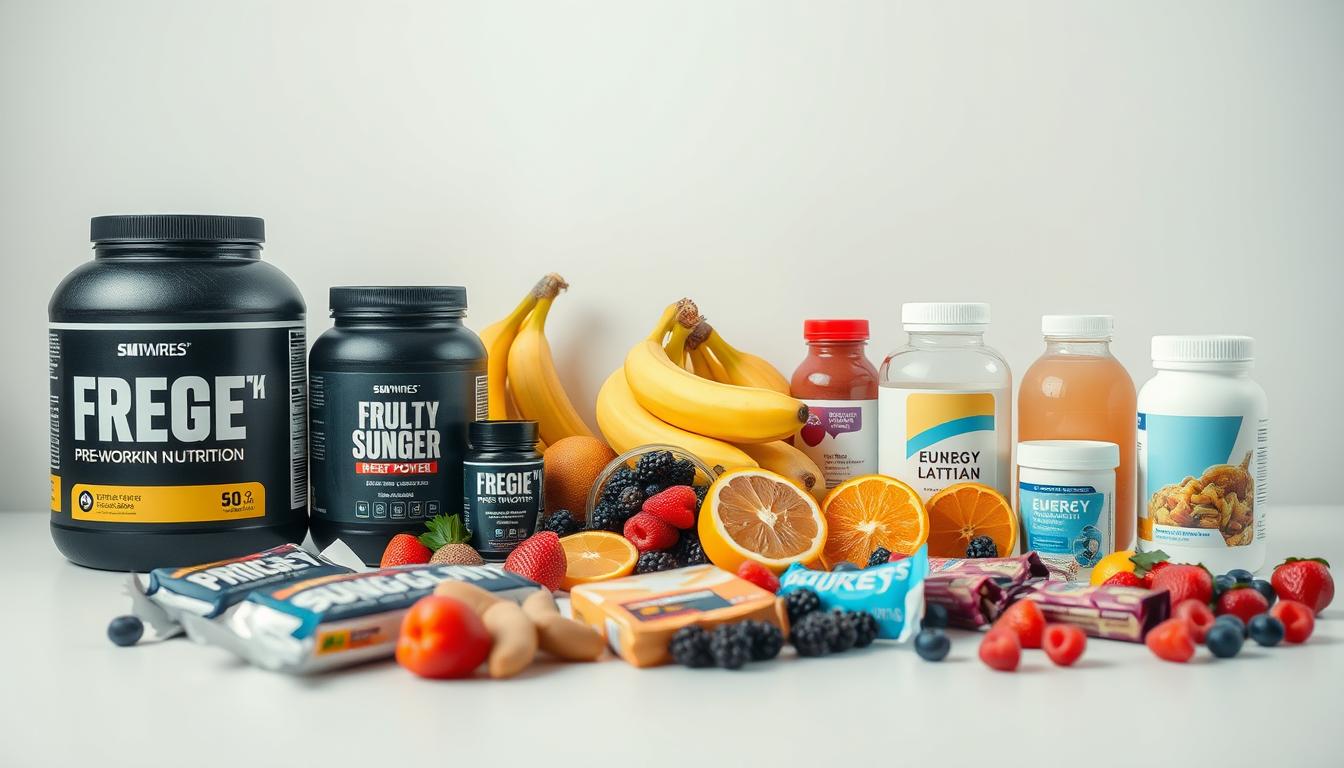Do you struggle to lose weight because you’re always busy? You’re not alone. Many busy professionals find it hard to fit in exercise and healthy eating with their work and personal life.
If you’re busy, you need a simple yet effective way to lose fat. This guide is here to help. It offers a detailed look at the best strategies and techniques for weight loss for busy professionals.
Key Takeaways
- Effective strategies for fat loss despite a busy schedule
- Simple and sustainable dietary changes for weight loss
- Time-efficient workout routines for busy professionals
- Tips for maintaining motivation and tracking progress
- Common mistakes to avoid on your weight loss journey
The Science of Fat Loss: What Every Busy Beginner Needs to Know
Learning about fat loss is key for anyone wanting to lose weight, even if you’re busy. It’s important to know the basics of how it works.
How Your Body Actually Burns Fat
Your body uses fat for energy when you eat fewer calories than you burn. It breaks down fat cells into fatty acids. Then, your muscles use these acids for energy.
Fat burning happens when you’re in a calorie deficit. This means eating fewer calories than you burn. You can do this through diet, exercise, or lifestyle changes.

The Calorie Deficit Principle Simplified
A calorie deficit is key for losing fat. You need to eat fewer calories than you burn. You can do this by eating less, moving more, or both.
For example, if you need 2,500 calories a day, eating 2,000 calories can help you lose fat. This is while keeping your activity level the same.
| Daily Caloric Intake | Daily Caloric Expenditure | Calorie Deficit |
|---|---|---|
| 2000 calories | 2500 calories | 500 calories |
| 1800 calories | 2500 calories | 700 calories |
Why Traditional Weight Loss Methods Fail Busy People
Traditional weight loss plans often don’t work for busy people. They’re too time-consuming and hard to keep up with.
Many diets and workouts don’t fit into a busy schedule. This leads to giving up.
By learning about fat loss and using fat burning strategies that fit your life, you can reach your goals better.
Setting Realistic Fat Loss Goals with a Packed Schedule
For those with busy lives, the secret to losing fat is setting goals that fit your lifestyle. It’s important to plan your fat loss in a way that’s both structured and achievable.
Assessing Your Current Fitness Level Quickly
First, understand where you are now. Assess your fitness level by tracking your daily activity and eating habits. Also, note your current weight and body measurements. This will give you a clear starting point.
Creating SMART Goals That Fit Your Busy Life
SMART goals are Specific, Measurable, Achievable, Relevant, and Time-bound. For example, instead of saying “I want to lose weight,” aim for “I will lose 10 pounds in 3 months.” You’ll exercise for 15 minutes, 3 times a week, and cut 500 calories a day. This makes your goals clear and doable.

Establishing Achievable Timelines and Expectations
Setting realistic timelines is key. Break down your larger goal into smaller, manageable steps. For instance, if you want to lose 20 pounds in 6 months, aim for 3-4 pounds a month. This makes your goal less overwhelming and more achievable.
The Power of Small, Consistent Changes
Small changes can add up over time. Focus on making consistent, sustainable lifestyle adjustments instead of trying drastic changes. Start with small steps like adding a 10-minute walk or replacing one unhealthy meal with a healthier option each day.
- Track your progress regularly to stay motivated.
- Celebrate small victories along the way to keep your morale high.
- Be flexible and adjust your goals as needed based on your progress and changing circumstances.
By following these steps and staying committed to your goals, you can lose significant weight even with a packed schedule.
Fat Loss for Busy People: The Ultimate Beginner’s Nutrition Plan
For busy folks, losing fat is all about a simple, effective nutrition plan. Michelle Obama once said, “We need to teach our kids that being healthy is not just about being thin, it’s about being strong, it’s about being able to run and play and enjoy life.” This quote shows the importance of a balanced diet, even for those with tight schedules.
15-Minute Meal Planning for the Time-Strapped
Meal planning is key for a good nutrition plan. You can make a healthy meal plan in 15 minutes by choosing simple, enjoyable meals. List your favorite healthy meals and make a schedule. For instance, have three breakfasts, five lunches, and five dinners to rotate all month.
Batch Cooking and Meal Prep Shortcuts
Batch cooking and meal prep are game-changers for busy pros. Spend one day a week (like Sunday) cooking meals for the next few days. Cook proteins, grains, and veggies that you can mix and match for different meals. A study in the Journal of the Academy of Nutrition and Dietetics found that meal planning improves diet quality and reduces waste.
Grab-and-Go Options That Support Fat Loss
Healthy grab-and-go options are essential for busy people. Great choices include hard-boiled eggs, Greek yogurt, nuts, fruits, and veggies with hummus. Prepare these in advance and keep them in easy spots (like your bag or desk) to stay on track.
Navigating Restaurants and Takeout Without Sabotaging Progress
Eating out doesn’t have to ruin your diet. Choose restaurants with healthy options and ask for modifications (like grilled instead of fried). When getting takeout, pick places with nutritious meals and consider sharing to control portions.
“The biggest mistake people make when eating out is not being mindful of portion sizes,” says registered dietitian Nicole M. Avena. “Being aware of what you’re eating, even when it’s not home-cooked, is key.”
Time-Efficient Workouts That Maximize Fat Burning
For those with tight schedules, quick workouts are key to losing fat. The goal is to make every minute count.
10-20-30 Minute Workout Templates for Busy Schedules
Short, intense workouts can be as good as longer ones. Here are some quick templates:
- 10-Minute Workout: Start with 5 minutes of warm-up, then do 3 minutes of high-intensity moves (like burpees or jump squats). Finish with 2 minutes of cool-down.
- 20-Minute Workout: Begin with 5 minutes of warm-up, then do 10 minutes of circuit training (push-ups, lunges, planks). End with 5 minutes of cool-down.
- 30-Minute Workout: Start with 5 minutes of warm-up, then do 20 minutes of HIIT or strength training. Finish with 5 minutes of cool-down.
High-Intensity Interval Training (HIIT) for Quick Results
HIIT mixes short, intense exercise with brief rest periods. It’s highly effective for losing fat because it:
- Increases your metabolism
- Boosts heart health
- Can be done with many exercises (sprints, cycling, bodyweight moves)
For example, try 30 seconds of sprinting followed by 30 seconds of rest. Repeat for 15-20 minutes.
Essential Strength Movements for Metabolic Boost
Adding strength training to your routine can help you lose fat faster. It builds muscle, which raises your resting metabolic rate. Focus on big exercises like:
- Squats
- Deadlifts
- Bench Press
- Pull-ups
These exercises work many muscles at once. They’re a smart way to build strength and burn fat.
Making the Most of Weekend Workouts When Time Permits
Weekends often mean more time for exercise. Use this chance to:
- Do longer, more relaxed workouts (like hikes or bike rides)
- Plan meals and workouts for the week ahead
- Take it easy with restorative yoga or light stretching
By making the most of your weekends, you can keep up with your fat loss goals even when you’re busy.
Integrating Fitness Into Your Busy Day
You don’t need a lot of time to get fit. Adding small fitness activities to your daily routine can be very effective. By making a few simple changes, you can reach your fitness goals without giving up your busy schedule.
Finding Hidden Exercise Opportunities in Your Schedule
One great way to fit fitness into your day is by finding hidden exercise chances. Try taking the stairs instead of the elevator. Or walk to a coworker’s desk instead of emailing them. Even small actions like squats during phone calls can make a big difference.
As James Levine, a renowned expert in non-exercise activity thermogenesis (NEAT), once said, “Even the most mundane activities can be opportunities for physical activity.”
“The key is to turn every moment into a possible exercise chance.”
Workout Snacking: Breaking Exercise Into Micro-Sessions
Workout snacking means breaking your exercise into short, easy sessions. This could be 10 push-ups during TV commercials or a 5-minute yoga routine at lunch. These small sessions can keep you active and full of energy all day.
Multitasking Strategies: Combining Fitness with Daily Tasks
Another smart strategy is to mix fitness with your daily tasks. Listen to an audiobook or podcast while jogging. Or stretch while cooking dinner. This saves time and makes your tasks more fun and engaging.
| Task | Fitness Integration |
|---|---|
| Watching TV | Do squats or lunges during commercial breaks |
| Cooking dinner | Stretch or do calf raises while waiting for food to cook |
| Listening to a podcast | Jog or walk while listening |
Creating Morning Routines That Set You Up for Success
Starting your day with a good morning routine can set a positive tone. This could be a short workout, meditation, or a healthy breakfast. A consistent morning routine boosts your energy and keeps you focused on your fitness goals.
To create a great morning routine, consider these tips:
- Start with a realistic goal, like 10-15 minutes of exercise or meditation.
- Gradually increase the duration and intensity as you get more comfortable.
- Make sure your routine is enjoyable and fits your fitness goals.
Overcoming Fat Loss Barriers When Time Is Limited
Getting rid of extra fat while you’re busy needs a smart plan, not just willpower. You’ll face obstacles that can stop you from reaching your goals. Knowing how to beat these barriers is key to keeping on track.
Managing Stress-Induced Eating During Busy Periods
Stress can make you want to eat more, often unhealthy foods. To fight this, try mindfulness practices like meditation or deep breathing. These can lower stress and stop you from eating too much.
Also, have healthy snacks ready to avoid bad choices when stressed. Prepare nutritious snacks like nuts, fruits, or energy balls. This helps keep your hunger and stress in balance.
Navigating Social Events and Family Obligations
Going to social events can be tough on your diet. To handle this, plan ahead by eating well before you go. Bringing a healthy dish to share is also a good idea, so there’s a good choice for everyone.
- Be mindful of your portions
- Choose healthier options when possible
- Stay hydrated to avoid mistaking thirst for hunger
Maintaining Progress During Business Travel
Traveling for work can mess up your diet plans. To keep up, research healthy dining options at your destination. Bringing healthy snacks and staying active with hotel workouts or walking can also help.
Breaking Through Plateaus When You Can’t Add More Gym Time
Hit a plateau? It’s tough, and you’re already busy. To get past it, adjust your workout routine or focus on optimizing your nutrition for fat loss.
- Check your calorie intake to make sure you’re losing fat
- Change up your exercise to keep challenging yourself
- Make sure you get enough sleep for recovery and fat loss
By using these tips, you can beat common fat loss barriers even when time is tight. Stay adaptable and don’t be too hard on yourself. It’s all part of the journey.
Simple Progress Tracking for the Time-Conscious
You don’t need to spend hours tracking your progress. Simple methods can be very effective. As a busy person, it’s key to monitor your fat loss journey without wasting too much time. This section will show you how to track your progress efficiently, so you can stay on track without feeling overwhelmed.
Beyond the Scale: Quick Measurements That Matter
While weight is important, it’s not the only way to measure progress. Body fat percentage, measurements, and progress photos give a fuller picture of your fat loss journey. Taking these measurements once a week can keep you motivated and help you adjust your plan as needed.
For example, you might lose fat but gain muscle, which can make the scale not change much. By tracking body fat percentage, you can see the real progress you’re making.
| Measurement | Frequency | Benefit |
|---|---|---|
| Weight | Daily/Weekly | Monitors overall progress |
| Body Fat Percentage | Weekly/Monthly | Tracks fat loss vs. muscle gain |
| Measurements | Weekly | Monitors changes in body shape |
| Progress Photos | Weekly/Monthly | Visual tracking of progress |
Efficient Apps and Tools for Busy People
Using technology can make tracking progress easier. Apps like MyFitnessPal for calorie tracking and Fitbit for daily activity monitoring offer valuable insights. These tools are easy to use and can be accessed anywhere, helping you stay on track.
The 2-Minute Daily Check-in Method
A simple daily check-in can be very effective. Spend two minutes each day logging your food, physical activity, and other important metrics. This habit keeps you accountable and helps you spot patterns or areas for improvement.
Adjusting Your Approach Based on Results
Tracking your progress is not just about monitoring; it’s also about making changes. Regularly review your data to see what’s working and what’s not. If you’re not seeing the results you want, consider changing your diet, exercise routine, or both. This ongoing process helps you keep moving toward your fat loss goals.
Staying Motivated on Your Fat Loss Journey
Staying motivated on your fat loss journey is key when you’re busy. It’s not just about starting strong. It’s about keeping up the pace over time.
Building a Support System That Respects Your Time Constraints
A good support system can really help. This could be a friend, family member, or online group that gets your busy life. Accountability partners offer encouragement and keep you on track.
- Join online forums or social media groups focused on fat loss.
- Share your goals with a friend or family member and ask them to check in with you.
- Consider hiring a personal trainer who can offer flexible scheduling.
Celebrating Small Wins to Maintain Momentum
Celebrating small victories is key to staying motivated. It could be finishing a tough workout or choosing a healthy meal.
- Acknowledge your achievements, no matter how small they seem.
- Reward yourself with non-food items, like a new workout outfit or a relaxing bath.
- Keep a motivation journal to track your progress and reflect on your successes.
Mindset Shifts for Busy Professionals
Having the right mindset is vital for sustainable weight loss. Focus on making progress, not being perfect. Be gentle with yourself when you slip up.
Overcoming Guilt When Missing Workouts or Meals
Missing a workout or meal plan happens sometimes. Don’t feel guilty. Just get back on track as soon as you can. Remember, staying consistent is the way to reach your fat loss goals.
By using these tips, you can keep your motivation up and reach sustainable weight loss even with a busy schedule.
Conclusion: Your Sustainable Path to Fat Loss Success
Reaching your fat loss goals is possible, even when life gets busy. Learning about fat loss, setting achievable goals, and using smart diet and exercise plans are key. Focus on making small, steady changes that work for you.
Adding fitness to your daily life, beating common challenges, and keeping track of your progress will help you reach your goals. Having a support system and celebrating small victories keeps you motivated. Your path to lasting fat loss is about making gradual, doable changes.
Adopting this mindset not only helps you lose fat but also improves your overall health and balance. You have the knowledge and methods to succeed. Now, it’s time to start and enjoy the lasting benefits of sustainable fat loss.


